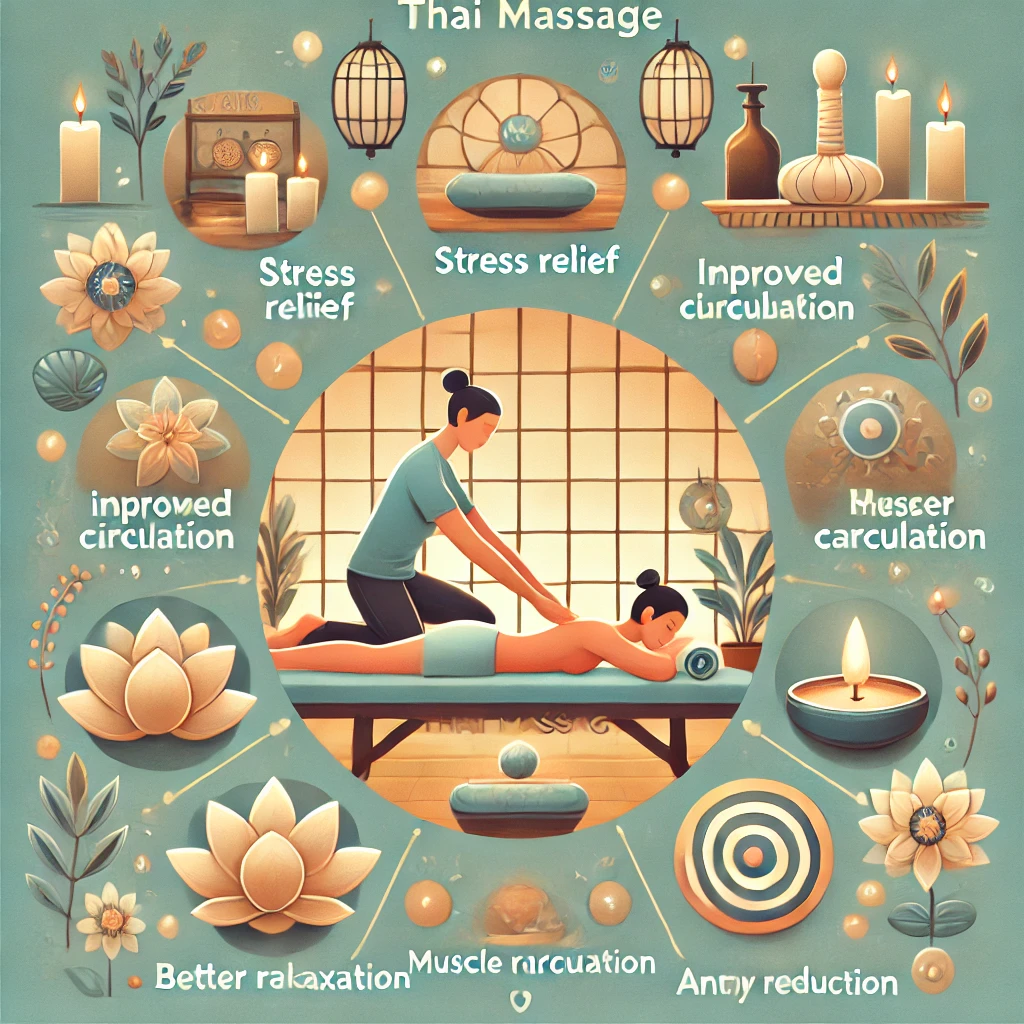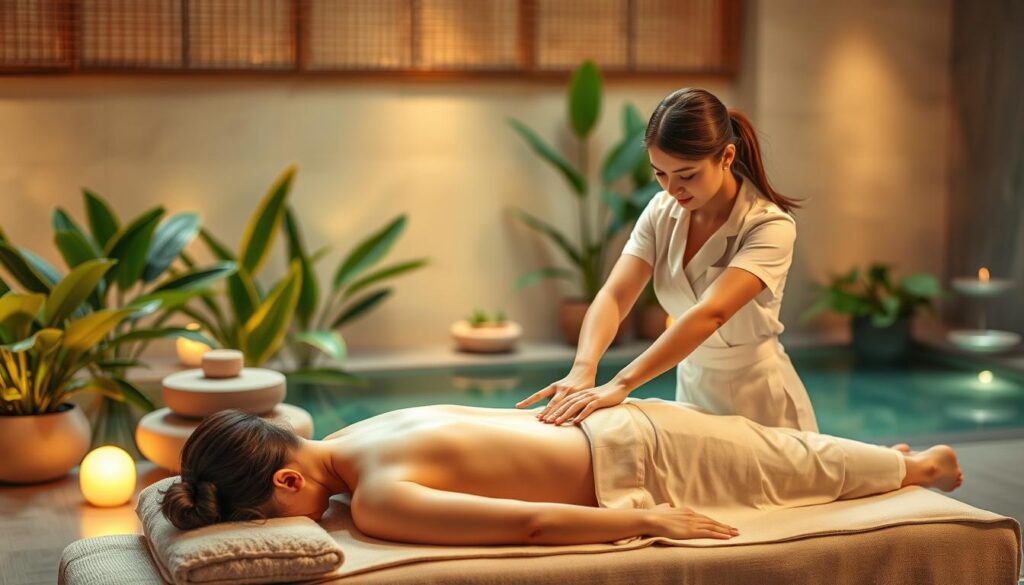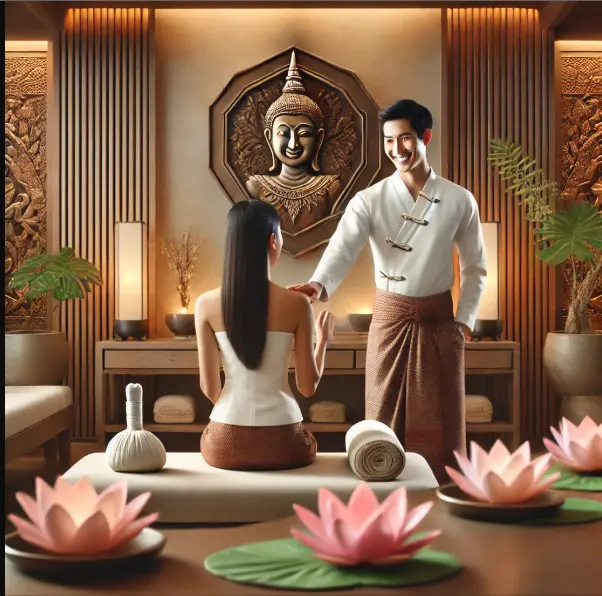
TEXT US

TEXT US
perththaimassage
November 22, 2024




Do not hesitate to contact us. Your enquiries is most welcome.

Finding the perfect Thai massage therapist in Perth or anywhere in Australia. Is crucial for enjoying a relaxing and effective experience. A skilled therapist can adapt techniques to suit your specific needs, ensuring optimal physical and mental benefits. Here’s a comprehensive guide to help you choose the right Thai massage therapist, tailored to Australian readers.
Selecting a Thai massage therapist is more than just booking an appointment—it’s about finding someone who aligns with your wellness goals. A good therapist will tailor sessions to address your unique concerns, whether that’s relieving chronic pain, reducing stress, or improving flexibility.
The first step in identifying a qualified Thai massage therapist is checking their credentials. Reputable therapists will have certifications from recognised institutions, such as Thai massage schools in Thailand or Australia. These certifications demonstrate expertise in traditional techniques like acupressure, assisted stretching, and energy line work.
In Australia, therapists may also hold a Diploma of Remedial Massage or similar qualifications. This ensures they are trained to understand the body’s anatomy and apply techniques safely.
Experience often sets apart great therapists from average ones. Look for someone who has been practising Thai massage for several years, as this demonstrates not only expertise but also consistency.
Many therapists specialise in specific areas, such as managing chronic pain, improving athletic performance, or aiding recovery from injuries. If you have a particular concern, seek a therapist whose experience aligns with your needs.
A good therapist will take the time to understand your specific requirements before starting the session. They’ll ask about your medical history, areas of discomfort, and goals for the massage. This initial consultation is vital in tailoring the session to suit you.
During the massage, they should check in to ensure you’re comfortable. Thai massage can involve deep pressure and stretching, so communication is key to ensuring the techniques meet your comfort levels.
The setting of your massage session can significantly impact your experience. A serene and welcoming environment helps you relax and enjoy the full benefits of the massage.
Look for a space that is clean, quiet, and thoughtfully designed. Features such as warm lighting, calming music, and traditional Thai decor can enhance the experience. The room should also have a comfortable padded mat for the massage.
In the digital age, reviews and testimonials are invaluable tools for evaluating a therapist’s reputation. Check online reviews on platforms like Google, Facebook, or local business directories to see what past clients have to say.
Pay attention to feedback about the therapist’s professionalism, ability to address specific concerns, and the overall quality of the massage. Consistently positive reviews are a good indicator that the therapist is reliable and skilled.
Choosing a therapist who is conveniently located can make it easier to incorporate Thai massage into your routine. Look for therapists near your home, workplace, or gym. Many Australian cities have reputable Thai massage clinics in central locations or suburban areas.
Accessibility is also important. If you have mobility issues or specific needs, ensure the clinic can accommodate them.
While price shouldn’t be the only factor in your decision, it’s important to choose a therapist whose rates align with your budget. Thai massage prices in Australia typically range from $60 to $120 per session, depending on the therapist’s experience and the session duration.
Some clinics offer packages or discounts for multiple sessions, which can provide better value. Remember, a slightly higher price may be worth it for a more experienced therapist or a superior experience.
Avoid therapists who cannot provide proof of training or certification. This may indicate they lack the necessary skills and knowledge to deliver a safe and effective Thai massage.
The clinic or space where the massage takes place should be clean and well-maintained. Unsanitary conditions can detract from the experience and even pose health risks.
Some clinics may try to upsell packages or services aggressively. A professional therapist will focus on your needs rather than pushing additional services.
Trust your instincts when choosing a therapist. If you feel comfortable and confident during your initial consultation, it’s a good sign you’ve found the right match. On the other hand, if something feels off—whether it’s the therapist’s approach or the environment—it’s worth exploring other options.
The internet is a valuable resource for finding Thai massage therapists in Australia. Many clinics and therapists have websites where you can read about their services, view testimonials, and book appointments. Social media platforms like Facebook and Instagram can also provide insights into their practice.
Word of mouth is one of the most trusted ways to find a great therapist. Ask friends, family, or colleagues for recommendations. Their firsthand experiences can give you confidence in your choice.
Once you’ve chosen a therapist, it’s time to prepare for your first session. Wear loose, comfortable clothing that allows for easy movement. Discuss any specific goals or concerns with your therapist beforehand. Arrive a few minutes early to settle in and enjoy the relaxing environment.
Choosing the right therapist is only part of the equation. Next, it’s important to determine if Thai massage is the best style for your needs. In the following article, we’ll explore how Thai massage compares to other popular techniques like Swedish, deep tissue, and reflexology.
Stay tuned for Article 5: “Thai Massage vs. Other Massage Styles: Which One is Best for You?”, where we’ll help you decide which type of massage aligns with your wellness goals.
Thai massage involves a combination of assisted stretching, rhythmic compression, and acupressure techniques, while regular massage typically focuses on kneading, stroking, and rubbing of the muscles using various techniques such as effleurage and petrissage. Additionally, Thai massage is rooted in ancient Thai healing traditions and emphasizes balancing the body’s energy flow, whereas regular massage has its origins in Western medical practices and aims to promote relaxation and reduce muscle tension.
Both Thai massage and regular massage can be effective for relieving muscular tension and stiffness, but they approach this goal in different ways. Thai massage uses stretching and acupressure techniques to release tension and improve flexibility, while regular massage employs kneading and stroking motions to relax the muscles and improve circulation. The choice between the two depends on individual preferences and needs.
Thai massage is often favored by athletes and physically active individuals for its emphasis on flexibility and mobility. The assisted stretching techniques used in Thai massage can help to improve range of motion, reduce the risk of injury, and enhance athletic performance. However, regular massage can also be beneficial for athletes, as it helps to alleviate muscle soreness, promote recovery, and prevent overuse injuries.
Both Thai massage and regular massage can promote stress relief and relaxation, but they offer different approaches to achieving these goals. Thai massage combines physical manipulation with mindfulness practices to induce deep relaxation and reduce stress levels. Regular massage, on the other hand, focuses on soothing the muscles and calming the nervous system through gentle, rhythmic strokes. Ultimately, the choice between the two depends on individual preferences and the desired outcome.
While both Thai massage and regular massage are generally safe for most people, there are certain contraindications and health considerations to keep in mind. Thai massage involves stretching and pressure techniques that may not be suitable for individuals with certain medical conditions, such as osteoporosis, herniated discs, or recent injuries. Regular massage, on the other hand, may not be recommended for individuals with skin conditions, open wounds, or certain medical conditions that affect circulation. It’s important to consult with a qualified healthcare professional before undergoing any type of massage therapy, especially if you have underlying health concerns.